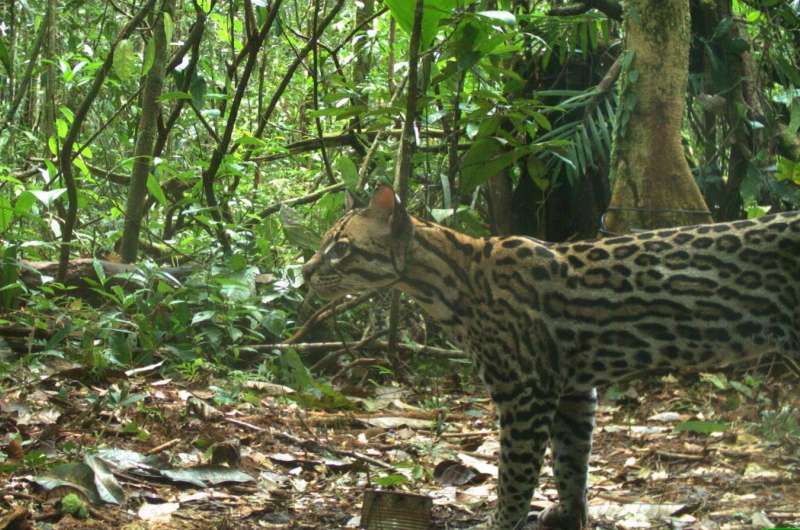Ocelot density in the Brazilian Amazon may be lower than expected

The population density of ocelots in the Brazilian Amazon may be stable but lower than expected, according to a study published May 18, 2016 in the open-access journal PLOS ONE by Daniel Gomes da Rocha from the University of Oxford, UK, and colleagues.
Amazonia is considered a major stronghold for the ocelot (Leopardus pardalis), with relatively high expected density for the species. It was severely hunted during the 1960s and '70s due to international fur trade demands and, while it is now classified as Least Concern on the IUCN Red List, habitat loss continues to threaten its existence today. Nevertheless, until this year, there was no available density estimate for ocelots in the Brazilian Amazon. The authors of this study used camera-trap surveys from three consecutive years and recently developed models to estimate ocelot density in a pristine forest area within Amanã Sustainable Development Reserve in Central Amazonia.
The authors found that ocelot densities in the reserve were stable during the three years of study (no significant growth or decline), with an average of 25 ocelots per 100 km2. However, this estimate is lower than expected for the region. The results suggest that the natural ocelot density in some pristine regions of the Amazon may in fact be lower than predicted by previous modelling studies.
This study could not distinguish between the sexes, which may have affected density estimates, as male ocelots tend to range over larger distances than females do. Nonetheless, the authors hope their results will help to clarify the ocelot's ecology in the Brazilian Amazon and aid development of effective long-term conservation strategies.
Daniel Gomes da Rocha notes: "The results help to improve our understanding of the ocelot spatial distribution pattern and will be useful for refining the ocelot extinction risk assessment and underpinning future conservation actions focused on the species."
More information: Rocha DGd, Sollmann R, Ramalho EE, Ilha R, Tan CKW (2016) Ocelot (Leopardus pardalis) Density in Central Amazonia. PLoS ONE 11(5): e0154624. DOI: 10.1371/journal.pone.0154624
Journal information: PLoS ONE
Provided by Public Library of Science



















